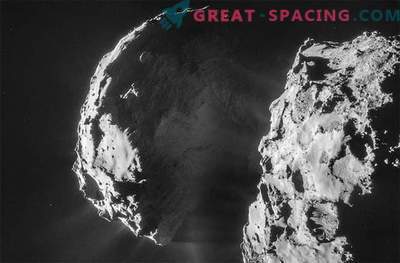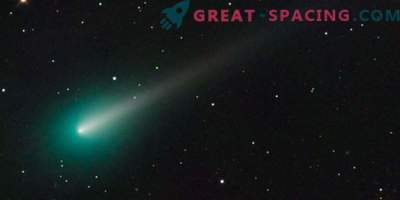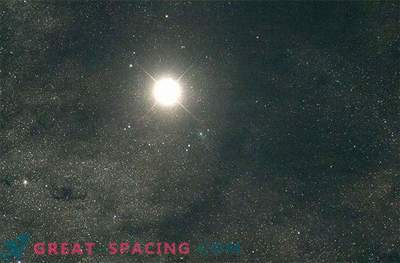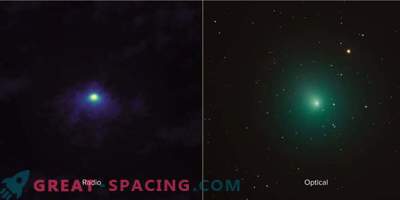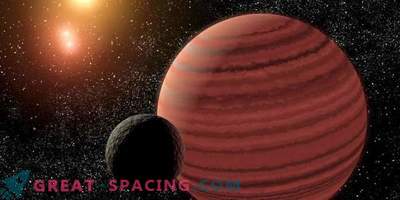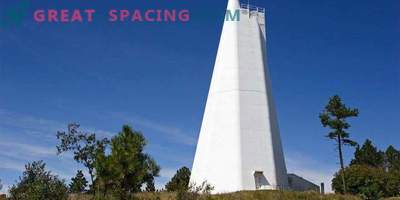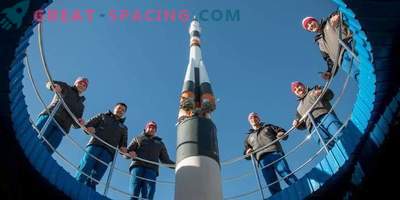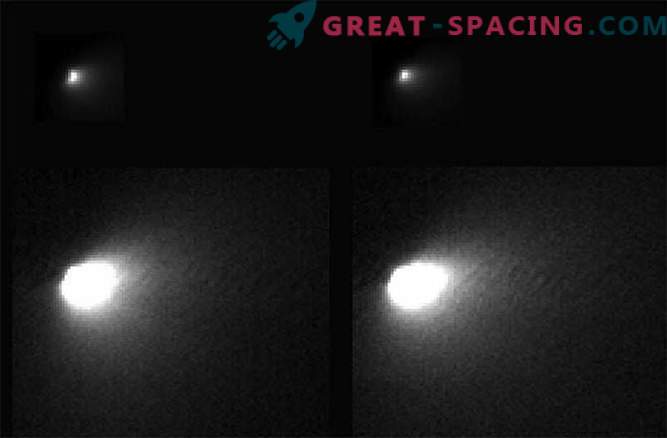
The High-Resolution Imaging Science Experiment (HiRISE), mounted aboard NASA's Reconnaissance Orbiter (MRO) spacecraft, was the first device in Mars orbit to receive images of the core and the Somet-Spring comet. In addition, it became the first mission in history that managed to photograph the primeval nucleus of a long-period comet during its first orbit around the Sun.
Interestingly, as a result of analyzing these first observations made (HiRISE), astronomers determined that the comet's ice core is much smaller than originally thought.
"Astronomers who observed a comet from a telescope modeled the size of a comet's nucleus that is about half a mile or one kilometer in diameter," according to a press release from NASA's Jet Propulsion Laboratory. "However, the best image of HiRISE shows a bright feature of two to three pixels, meaning that the core is only half the intended size."
The two slides presented in the image show the two best images made by HiRISE. The top miniatures are images with a full dynamic range, including the core and com. The comet consists of a central ice block - the nucleus, and when the comet begins to heat up due to solar energy, the ice begins to evaporate, throwing steam and dust into space and creating the comet's tail. Larger lower images show the scale of the cometary coma. The core in these images is not visible. The time difference between the right and left images is approximately 9 minutes.
Three days before the closest approach, the MRO began to track the location of the comet. However, its predicted position was a little inaccurate, after which the mission’s scientists made an appropriate adjustment so that Comet Siding Spring would come into the view of the HiRISE camera.
This is the first time in history when an untouched comet from the Oort Cloud flew to us - a hypothetical region surrounding the Sun at a distance of one light year and containing countless ice bodies that could become comets if they moved closer to the Sun. The comets that we observed up to this point were short-period comets (for example, the famous comet Halley). This is real luck that Comet Siding Spring, which was discovered only in January 2013, so kindly flew so close to the planet on which we have a whole armada of spacecraft.
These observations will help us better understand the nature of these mysterious ice bodies, which were formed at the dawn of the origin of the solar system more than 5 billion years ago.



